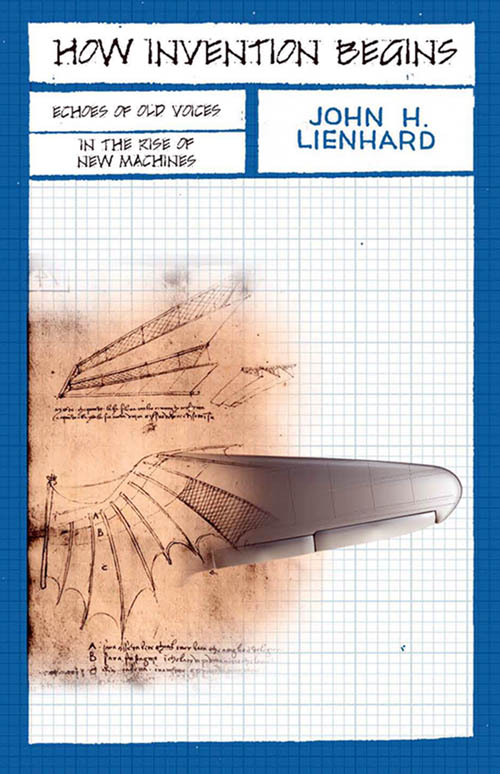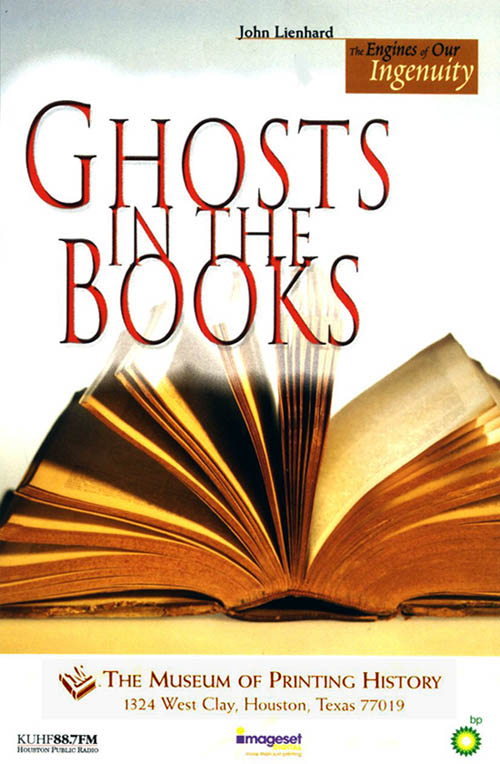At the Museum
Today, we go to a museum. The University of Houston's College of Engineering presents this series about the machines that make our civilization run, and the people whose ingenuity created them.
Museums are on my mind these days. During Summer and Fall of 2006, Houston's Museum of Printing History is doing an exhibit of old books that've been the basis of many Engines programs -- old books that I feature in my new book, How Invention Begins. One section of that book is about the sudden rise of cheap books in the early 19th century -- about their transforming effect upon America.
Invention flowed from independent people who absorbed information with little help from large educational infrastructures. So the exhibit is where two avenues of independent learning meet. Museums and books are places where we can learn on our own -- follow our own rhythm. There's rather little difference between a book and a museum when we bring our unanswered questions to either one.
In any new town, I move toward museums and bookshops the way a moth moves toward a flame. In the museums, I ask, what do these people want to show me? The answer tells me who they are -- what they see that I have not yet seen.
As I look, and read labels, more questions form. I lose myself in questions, drifting from label to display case, back to label -- then breaking free of the display sequence, moving back and forth among cases, answering my own new questions, as they arise, and finding my own optimal sequence.
In the book, How Invention Begins, I trace similar seemingly patternless patterns in the rise of invention. The exhibit in the Printing Museum can be traced, maybe best be traced, just this way. It's titled Ghosts in the Books,because in it we meet ghosts of old owners of individual books. What these ghosts learned from their books depended upon just what they brought to the books ...
Young Michael Faraday read a book on chemistry written for young people, and went on to set the foundations of theoretical electricity. William James read about the construction of a catenary curve and went on to develop the philosophy of pragmatism. Richard Newton, read about mechanics and went on to fight for the abolition of slavery. The wholly unpredictable ectoplasm of accomplishment rises out of these old books.
Too many people look upon museums as housing ghosts of the dead, rather than the still-vital elements of a former life. They see museums as houses of dust. But these ghosts have immense vitality, and the fruit of their lives serves us today. It all depends upon us the viewer, doesn't it? Approach a book or a museum or a school passively and the result can only be deadening.
But if we invest ourselves in the learning process that they all offer, wonderful things can happen. That's what makes learning buoyant. So, if you're anywhere near Houston during mid-2006, pay a visit to our Museum of Printing History. But do it with your curiosity unsatisfied. Then you'll meet some of the most lively ghosts around. And, if you're not in Houston -- well, these living ghosts inhabit your own museums, and they are worth meeting
I'm John Lienhard, at the University of Houston, where we're interested in the way inventive minds work.
J. H. Lienhard, How Invention Begins: Echoes of Old Voices in the Rise of New Machines. (New York: Oxford University Press, 2006).
The Ghosts in the Books exhibit runs from June 22 through Oct. 19, 2006 in the Museum of Printing History, 1324 West Clay, Houston, TX 77019 (Curated by Todd Samuelson.)
Ghosts in the Books is also the title/subject of the 2006-2007 KUHF-FM thank-you-gift-CD for contributors to the radio station.

